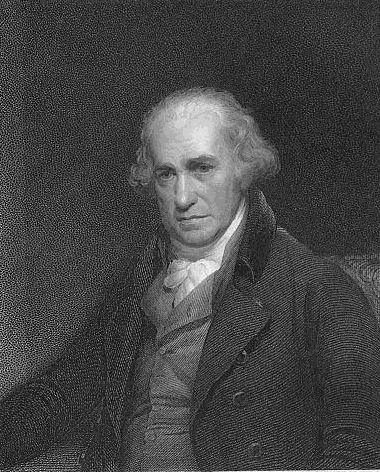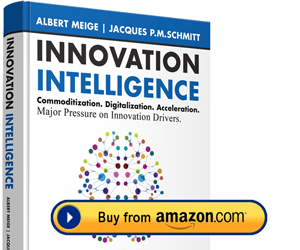The economist Adam Smith identified three key factors for economic growth: labor, capital, and resources. While the first and second Industrial Revolutions were mostly concerned with optimizing labor productivity and capital allocation, the third Industrial Revolution is expected to focus on optimizing resources. Resources are understood in a broad sense to include land, raw materials, energy, workspace, knowledge, human resources, and so forth.
First Industrial Revolution: optimizing labor

Second Industrial Revolution: urbanization, capital, and corporate R&D
By the end of the nineteenth century, the first Industrial Revolution had transformed Europe and the United States: productivity had experienced a tenfold increase, but urbanization was becoming a serious issue. The second Industrial Revolution, with its wave of inventions for building modern cities and transportation networks, allowed cities to become much larger and denser. For example, the population of New York City grew from 800,000 in 1860 to 7.5 million in 1925, a tenfold increase in just sixty-five years. The second Industrial Revolution, like the first, focused on materials, for example steel rather than wood for buildings. It also focused on electricity, which was used for lighting and for powering appliances, air conditioning, elevators, assembly lines, and so forth. In addition, the second Industrial Revolution also focused on the combustion engine for use in transport.
Finally, the second Industrial Revolution introduced radical changes in the way firms were organized and managed: the first national and multinational corporations and corporate banks (to finance all of these capital-intensive infrastructures) appeared during this time. Corporate research and development became critical for the first time.
Third Industrial Revolution
The Internet of energy
Economic and social theorist Jeremy Rifkin, in his best-selling book The Third Industrial Revolution: How Lateral Power Is Transforming Energy, the Economy, and the World, describes a whirl of change with energy converging with the Internet and creating new businesses and employment. Rifkin has proposed five pillars of the third Industrial Revolution:
- renewable energy as a greener and more sustainable energy source;
- buildings as micro-power plants, leveraging local renewable energy;
- energy storage technologies in all buildings to adjust local supply of and demand for energy;
- the Internet as a technology for managing global supply of and demand for energy, via a global grid; and
- fuel-cell vehicles for transporting energy to various points of the continental grid.
Although Rifkin’s theory is controversial, he thinks that once these five pillars are brought together, synergies will be generated and we will be on the verge of a new economic paradigm. The bottom line, according to Rifkin, is that the Third Industrial Revolution will be about the Internet of Energy. Leading IT companies worldwide are already building the required infrastructure: IBM and its Smarter Planet initiative is one of the most famous examples.
The Internet of resources
In their book Resource Revolution, Stefan Heck and Matt Rogers go even further than Rifkin: they say that the third Industrial Revolution will focus on optimizing not only energy resources but any kind of resources used by individuals and companies.
Let’s consider the example of cars. When you think about it, cars are extremely inefficient vehicles for moving people around. They are inefficient in terms of energy consumption: with a typical weight of over 1.2 tons, each car transports an average of 1.6 people, with only a very small amount of the consumed energy moving the passengers. Cars are also inefficient in terms of capital: although cars represent a significant investment for their owners, the cars are parked most of the time. To address these inefficiencies of cars, a number of companies are currently reinventing the way in which people can be moved around. Zipcar allows you to rent a car where you are, when you need it, by the hour or day, on demand via a simple smartphone app. Uber connects passengers with drivers of cars.
An incredible number of new services are trying to address such inefficiencies in various domains. The iTunes Store changed the way people buy music. Amazon.com changed the way people buy books and many other products. eBay changed the way people sell and buy stuff to each other. Spotify, an online music-streaming service, changed the way people listen to music. Airbnb changed the way people rent accommodations when traveling. This list could go on and on.
Uber: they change the way you take a cab: Founded in 2009 by Garrett Camp, Travis Kalanick, and Oscar Salazar, the highly controversial car-hire app Uber has reached a valuation of over EUR 13 billion as of 2014, four years after the app was deployed for the first time in San Francisco—it is said to be the second richest start-up in history. The concept behind Uber is to connect passengers with drivers of cars. Uber is an efficient tool that addresses one of the above-mentioned car inefficiencies: the passenger pays for the car only when using it, there is no need for most passengers to own a car. In addition, a driver provides a low-cost, high-end service to the passengers, making Uber an excellent substitute for traditional cabs.
The bottom line is the following: look at all the resources used by individuals and companies, spot the inefficiencies, and rethink the system as a whole by leveraging information technology.
Because there are significant inefficiencies in accessing knowledge and engaging talent, it is legitimate to wonder how digital technologies will affect the way in which companies access knowledge and engage workers who have the required skills.

Expertise you need. Fellows you can trust
The Conciergerie platform sets up your call appointment with a Presans-vetted international expert within few days




Back in the 1980’s,you couldn’t pick up a newspaper or magazine without reading about
Rifkin attacking Biotechnology.He filed a ton of lawsuits against it.His main complaint was
that scientists were rushing to use this technology without a full scale evaluation of it’s
safety and impact on society and the enviroment.He raised concerns and issues and warned of unforeseen consequences.But now,with his Third Industrial Revolution,Rifkin’s doing the
exact opposite.He’s getting people all excited and anxious to make the switch to renewable energy.The problem is Rifkin’s not raising concerns and issues with renewable
energy like he did with Biotechnology.He’s not questioning the cost,safety and reliability of hydrogen and battery storage and the toxic chemicals and materials that are used in the maufacturing of solar panels.not to mention the impact solar panels and wind generators will have on society and the enviroment.